How To See An Impossible Colour
Glimpsing the Emerald City, and other brain-bending sights.
Hello! This is Everything Is Amazing, a newsletter about science, curiosity, wonder, and how ancient people were only as daft as we are.
The big international science headline of the last week was possible signs of life on another planet!
Okay. We’ve been here before and seen statements this dramatic that turned out (for now) to be false alarms - and true to form, the word “possible” is doing a LOT of work here, as befitting analysis of a world that’s 700 trillion miles away.
These findings are based on a spectroscopic analysis of the light coming from a world named K2-18b (first discovered in 2015), looking for absorption markers suggesting the presence of chemicals that can be associated with life.
Previous studies have indicated the presence of methane and carbon dioxide. In this case, the chemicals are dimethyl sulfide/sulphide (DMS) and dimethyl disulfide/disulphide (DMDS).
Quoting from neuroscientist Erik Hoel’s enjoyable take on the story:
“Ever cook cabbage? You’ve smelled dimethyl sulfide. It’s also created in vast quantities by phytoplankton. That fishy-odor you’ve whiffed at the beach? Dimethyl sulfide. Pigs sniff out truffles via dimethyl sulfide, and so too the James Webb Space Telescope sniffed out dimethyl sulfide on K2-18b. As my wife aptly put it: “It’s like we found someone’s poop.””
No doubt about it - this is potentially very exciting! Yet it’s still a few trillion miles away from having the apparent firmness of evidence (aka. statistical significance) required to make it a true “scientific discovery”.
For an excellent overview of the massive uncertainties still at play (including within the way the research has been presented), check out Astrophysics PhD candidate Skylar Grayson’s 2-minute rundown here. (As she rightly says: “extraordinary discoveries call for extraordinary evidence.”)
Also, and I can’t quite believe I’m going to do this but…okay, here’s a Friends meme that nicely sums up the main problem scientists encounter with communicating stuff like this through the news media to the general public:
THAT SAID - I am all for imagining it might be true (without believing it is, of course).
I’m also guessing that almost every scientist currently working the data is similarly stirred by the idea. At a time when science funding in the US is under attack, anything that gets folk excited has to be a good thing, not just to secure further funding but to keep reintroducing all of us to two absolutely earth-shattering ideas at the heart of cosmology, famously summed up by Arthur C. Clarke:
“Two possibilities exist: either we are alone in the Universe or we are not. Both are equally terrifying.”
(Being a tedious optimist, I’d turn “terrifying” into “thrillingly challenging”, but that’s just me.)
UPDATE: Astronomer and science communicator Phil Plait is also going with almost-certainly-not-biosignatures.
Secondly, I’ve been enjoying how this image makes my mind flop around in a mild panic:
This is an example of the Leaning Tower Illusion, first discovered by Frederick Kingdom, Ali Yoonessi and Elena Gheorghiu at McGill University in 2007 - and it seems to happen because our pattern-obsessed brains try to fit these separate (but identical) pictures together so they form one scene.
Because this results in a perspective mashup that can’t quite physically exist, the result is…well, you can probably see for yourself.
Here’s the original example, using Pisa’s famous Leaning Tower.
Staying with illusions - a brand new colour just dropped. And it’s an impossible one!
As detailed in a paper published in the journal Science Advances, (many thanks to Doug of Snack Stack for tagging me on Bluesky), it’s a blueish-green beyond any blueish-green that can possibly exist in the real world:
“The name comes from the Wizard of Oz, where there’s a journey to the Emerald City, where things look the most dazzling green you’ve ever seen,” [Professor Ren] Ng explains. On their own expedition, the researchers used lasers to precisely deliver tiny doses of light to select cone cells in the human eye. First, they mapped a portion of the retina to identify each cone cell as either an S, M or L cone. Then, using the laser, they delivered light only to M cone cells….
Ng himself was one of the participants. He entered a darkened lab and sat at a table. “There were lasers, mirrors, deformable mirrors, modulators, light detectors,” Ng says. There, he had to bite down hard on a bar to keep his head and eyes still. As the laser shone into his retina, he perceived a tiny square of light, roughly the size of a thumbnail viewed at arm’s distance. In that square, he glimpsed the Emerald City: a color the researchers have named “olo.”
This is wonderfully odd stuff, and it seems most people don’t know this bizarre effect exists, in the same way many women are unaware that they might (might!) be able to see 90 million more colours than men. Some types of impossible colours can be seen by almost everyone, so they’re gloriously fun to mess around with…
So, rerunning a newsletter I first published in season 5 - let’s bend your mind until it breaks.
Warning: if trying the following makes you feel genuinely uncomfortable - say, the sudden urge to puke, or perhaps track me down and kick me in the unmentionables - then please stop doing it! I promise you won’t miss anything, since I’m going to explain the whole thing as I go along.
Do you remember those “Magic Eye” (autostereogram) images that were all the rage in the late 1990s? The following works in a similar way.
Pick one of the two horizontal pairs of coloured squares in the image above, and fix your gaze on the white cross in the centre of one of them. Now let your eyes relax and unfocus, and gently try to cross them, as if you’re focusing on the tip of your own nose, except you’re still trying to keep that white cross in view while you do it.
Do this until you find a way to superimpose both the white crosses in each of the two squares over each other - bright red square snugly over bright green square, or darker red over darker green - and then try to keep them there.
(If you have any of the red/green colour visual deficiencies we called “colour blindness,” try this alternative with blue and yellow.)
If you’re like me, you’ll see the colour of that superimposed square flick from red to green (or blue to yellow) and back again, again and again, confusedly, as if your eyes can’t make their mind up or are panicking like a startled cat.
This is happening because you have presented your poor mind with an impossible challenge. It’s currently trying to blend those two colours together until you’re only seeing one image, in much the way our binocular vision has been helping us perceive depth since we were around 4 months old.
Except…
…red and green aren’t next to each other in the visible spectrum. There are two primary colours, yellow and orange, in the way - plus a vast array of different shades of each, representing hundreds of nanometres of different wavelengths of light.
On top of this, red and green are opponent hues - the colours which will form as afterimages against a white background if you stare at the other colour long enough. So your visual system just doesn’t know how to blend all of that together and “display the average” of the two opponent extremes of that scale: red and green.
So, naturally, it’s freaking out.
Be sure to enjoy this! Give it a few more seconds. Let it claw at the walls of your sanity. People consume all sorts of expensive recreational substances to have experiences as perception-jarring as this.
If you’re most people, your mind will continue to chaotically flop about, switching from one colour to the other without settling properly on either, for as long as you perform this self-experiment. (In my case, I think I’m starting to see a sort of ‘brownish-but-also-not-really’ colour before it flips one way or the other - which is interesting, since brown is what results if you mix red and green paint.)
It’s a hard limit of your visual system that you’ll probably never be able to go beyond. Congratulations: the fail-safes in your nervous system are working perfectly! How reassuring.
But it’s possible that you’re one of a very small number of people who will see…something else. For whatever reason, your mind may have the ability to look beyond that perceptual event horizon, beyond the apparent limits of human optical architecture - and see something that cannot possibly exist in the real world.
Welcome to the strange, strange world of redgreen. (Or yellowblue.)
It’s a colour you’ll never be able to explain to anyone else, since no language has developed words that can capture it adequately. Like Concetta Antico and her alleged tetrachromatic vision, it seems you’re perceiving colours almost nobody else can see - although, as with Antico, modern science has yet to reach consensus about whether this is really happening in a measurable sense, or if you just have an unusually vivid imagination.
In an elegant experiment in 1983, engineers used an eye tracker to fix the subject’s gaze onto the centre of a series of vertical red and green strips. The tracker used mirrors that responded to the tiny involuntary eye movements called saccades that stop our vision from becoming so stimulus-exhausted that we start hallucinating, as I previously wrote about here. No matter how their eyes moved, they still saw precisely the same image - counteracting the ‘screen-refresh’ (or, if we’re reading a book, ‘carriage return’) effect of a saccade.
For a few people taking the test, the view appeared to be absolutely wild:
“Some observers indicated that although they were aware that what they were viewing was a color (that is, the field was not achromatic), they were unable to name or describe the color. One of these observers was an artist with large color vocabulary. Other observers of the novel hues described the first stimulus as a reddish-green.”
Reddish-green, of course, doesn’t make much sense as a description - unless you mean yellow or orange, which you don’t, because you would have said “yellow” or “orange”. It’s a weird thing to think about, let alone see, and I really hope that if such people really exist, you’re one of the lucky ones.
(Fun fact: I’m one of around 5% of people in the world with something called Voluntary Nystagmus - a benign version of a very unpleasant eye condition - where I have the ability to make my eyes move independently of each other, if I so choose. I’ve been horrifying family members with it for the last 30 years - “do that bloody awful thing with your eyes, Mike! Jack hasn’t seen it yet!” - and I’ve never found a potential use for it until now. So instead of crossing my eyes inwards on each of those coloured squares, I tried moving one outwards, so I was simultaneously looking in two directions. By fixing each eye on one coloured square, each separated by a much larger gap than in the above image, I thought I could trick my brain into doing something amazing! Alas. What I saw was two images oscillating between each other, which eventually resolved into a Costa barista asking me if I was OK. Experiment over.)
OK. So you probably didn’t just see an impossible colour. I’m sorry, and I hear you: it’s very annoying when impossible things refuse to exist.
So here’s a better way for you, and just about everyone, to see not just one impossible colour, but three of them.
The way it works is simple, and you can do it three times, one for each row (giving your eyes a bit of a break in between doing each one).
First, you stare intently at the cross in the centre of the coloured circle in the column named “fatigue template” - then after maybe 30 seconds, or after as long as you can hold it, you dart your eyes sideways and stare at the cross in the “target field” box.
Have a go!
…
…
Okay! All done? How did you get on? And did you notice anything really weird about those colours?
Let’s take the first line: the apparent dark blue circle superimposed on the black background of the target field. Did you notice how it somehow looks darker than the black background, and yet it’s blue? But black is the absence of colour - it’s where colours go to die. You can’t darken black and end up with a colour. Beyond blackness is, well, just more black.
In the real world, this category of none more black includes the incredible Vantablack, a coating made of carbon nanotubes that’s capable of absorbing up to 99.965% of visible light, making it look like a hole in the world that’s so deep that not even a laser can reach the bottom of it:
But somehow, you saw a colour darker than black. It’s called Stygian Blue (from the mythical river Styx, with its waters darker than darkness itself) - and you certainly saw it, even though it’s not really there.
When you tried the second row, imposing the afterimage of that green circle upon that white background, you should have seen the exact opposite effect - a glowing pale red that seemed even brighter than its white backdrop. Which, again, is nonsense: white’s an infinity of colour, where optical colours go to die in the other way, being drowned out of existence by the sheer amount of mixed colours present.
In terms of optics, you can’t go beyond white and find a dominant colour other than “even whiter super-white”. In the physical world, that honour probably goes to this new paint that reflects 95.5% of sunlight, with exciting potential for keeping buildings cool without turning on the aircon.
Except - there are indeed real-world things that appear brighter than perfectly white surfaces! For example, we light our homes, our streets and our cities with one type of them. Anything that emits light has the potential to outshine a reflective surface - and that’s what seems to be happening here with this oddly brighter-than-white red circle.
For this reason, it’s a form of impossible colour called Self-Luminous - even though it technically isn’t, it only seems luminous.
The third row is the weirdest of the lot. The afterimage of that cyan-coloured circle, according to Opponent Process Theory (more on that another time, because it has delightfully absurd implications for how we see the world), is orange. But when you project that afterimage on that already fully orange square to the right, your brain is presented with a dilemma: hey, what’s even more orange than Totally Orange?
The answer is what you can see (or rather, think you can see): the gloriously named Hyperbolic Orange.
It’s like a colour version of the amplifier belonging to Spın̈al Tap’s Nigel Tufnel, with the dials that go up to eleven:
It’s complete twaddle (like Tufnel’s explanation), but it’s twaddle that temporarily fools you into thinking it’s ‘one more orange’.
The collective name for these three hues is Chimerical, from the word meaning “impossible to achieve,” because - yes, that. (Sort of).
Almost everyone should be able to see chimerical colours, unless the photoreceptors in their eyes are used to doing things a little different from the norm - and they’re another glimpse of the borders of our visual comprehension, where we abandon the hard science and give way to the realm of dream, hallucination, fiction and fantasy…
“The Neathbow is the collective term for seven colors which cannot be seen on the Surface…
The seven colors of the Neathbow are irrigo [“the unremembered color, the light of absence”], violant [“the color of troublesome but necessary connections”], cosmogone [“the color of remembered sunlight”], peligin [“the hue of the waters of the Unterzee and those of the land of the dead”], apocyan [“the color of coral and memory”], viric [“the green of shallow sleep”], and gant [“more beige than one might expect”].”
- The Fifth City, the unofficial wiki of Fallen London
“I put on the cloak... the hue fuligin, which is darker than black, admirably erases all folds, bunchings and gatherings so far as the eye is concerned, showing only a featureless dark.”
- The Shadow Of The Torturer by Gene Wolfe
“It was octarine, the colour of magic. It was alive and glowing and vibrant and it was the undisputed pigment of the imagination, because wherever it appeared it was a sign that mere matter was a servant of the powers of the magical mind. It was enchantment itself.
But Rincewind always thought it looked a sort of greenish-purple.”
- The Colour Of Magic by Terry Pratchett
(In real life, “octarine” was a proposed name for one of four new elements discovered and confirmed by the International Union of Applied Chemistry in 2016, and the subject of a widely publicised campaign - alas, an unsuccessful one. Next time, fans of the late Sir Terry!)
Further Reading:
- ““Impossible Colours”: See Hues That Don’t Exist” - Vincent A. Billock & Brian H. Tsou, Scientific American
Images: Zowie/Wikimedia; ISFDB; A Pilgrim In Narnia; Spooky/JPxG/Wikimedia; Uriel; Jonathan Taylor.


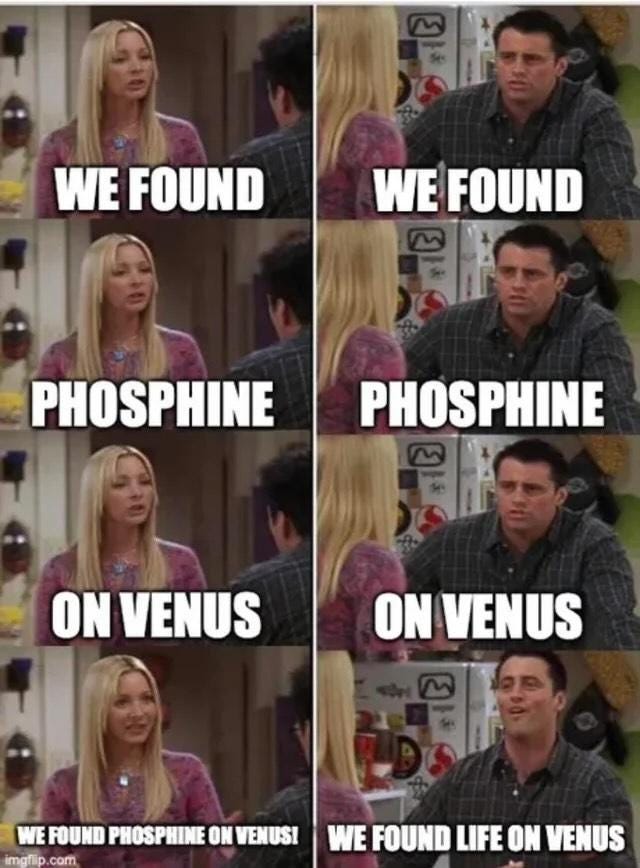
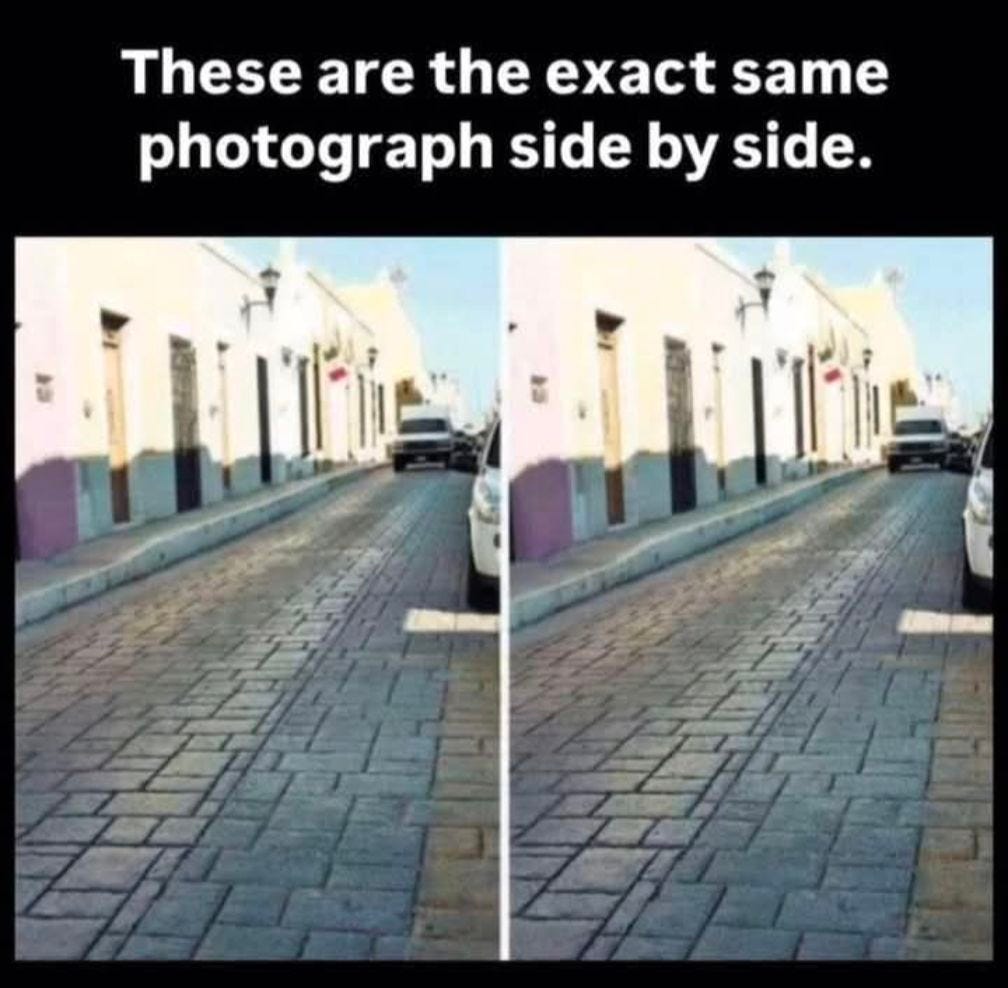
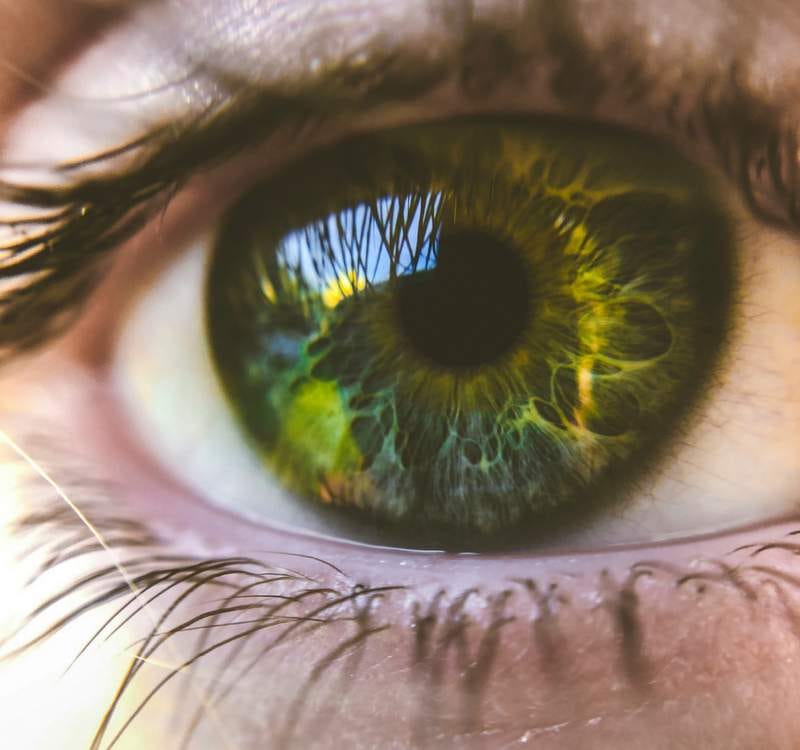

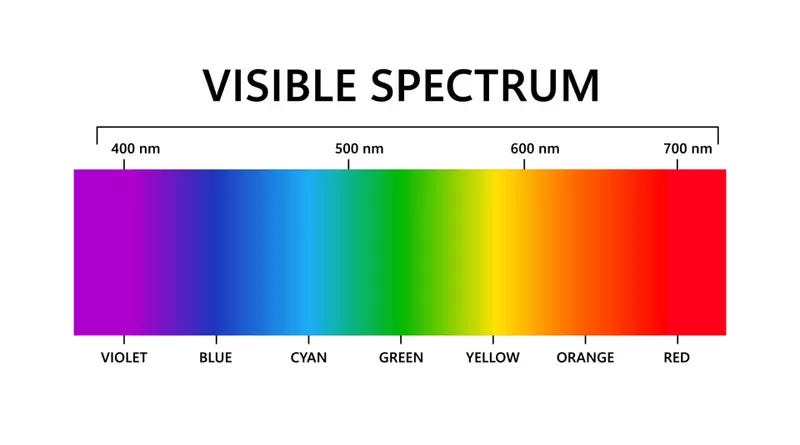


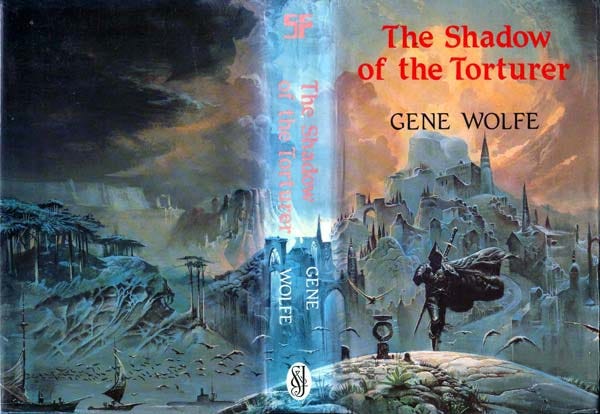
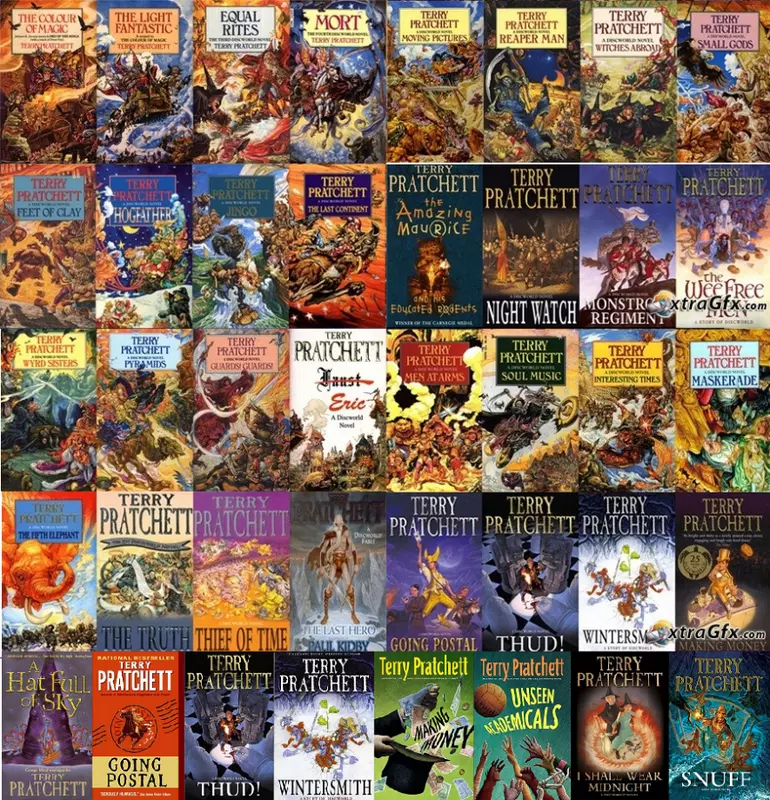
Thanks for popping into my e-mail world - you present a needed alternative - thanks for showing up on Easter a symbol of new beginnings-I’ll read your missives and let you know what I think from Sacramento, California in the un United States. Peace.
Wow, what a ride - from several trillion miles to nanoscale colour spectrum. I couldn't get the red and green to flash, but I saw a reddish green that looked like splotchy brown. I always had trouble with the seeing eye pics too, had to put it next to my face and move it out slowly while trying not to lose 'focus', which was always awkward when I was trying to see one on a poster in the window of a game shop 😝. Probably a good thing that trend ended.